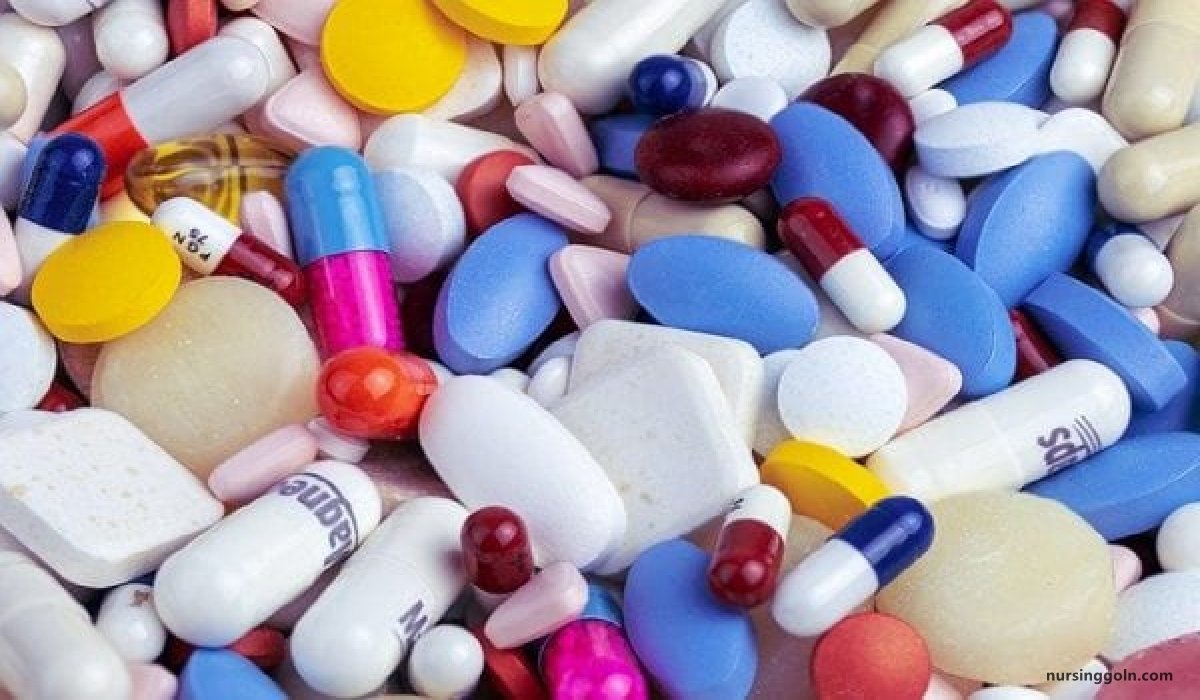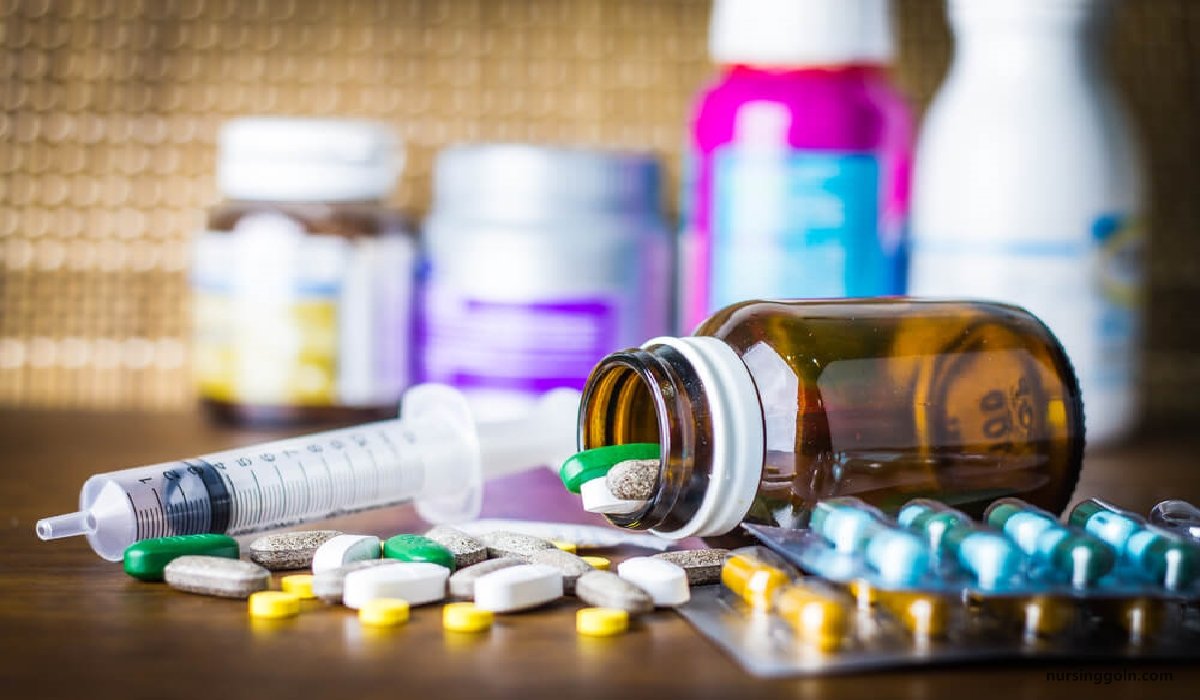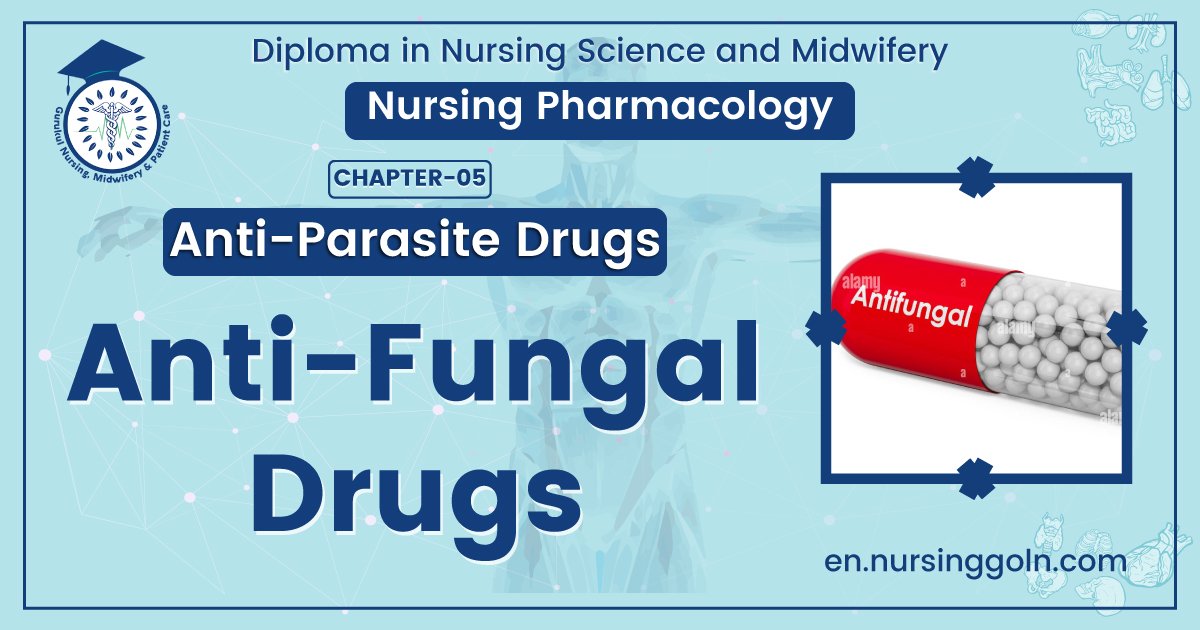Anti-Fungal Drugs – This book covers the entire syllabus of “Pharmacology” prescribed by BNMC- for a diploma in nursing science & midwifery students. We tried to accommodate the latest information and topics. This book is an examination set up according to the teachers’ lectures and examination questions.
At the end of the book, previous questions are given. We hope in touch with the book students’ knowledge will be upgraded and flourish. The unique way of presentation may make your reading of the book a pleasurable experience.

Anti-Fungal Drugs
The drugs that inhibit the growth or kill the fungus in the host are called antifungal drug. Infectious diseases caused by fungi are called mycoses, and they are often chronic in nature. Mycotic infections may be superficial and involve only the skin (cutaneous mycoses extending into the epidermis), while others may penetrate the skin, causing subcutaneous or systemic infections.
The characteristics of fungi are so unique and diverse that they are classified in their own kingdom. Unlike bacteria, fungi are eukaryotic, with rigid cell walls composed largely of chitin rather than peptidoglycan (a characteristic component of most bacterial cell walls). In addition, the fungal cell membrane contains ergosterol rather than the cholesterol found in mammalian membranes.
These structural characteristics are useful in targeting chemotherapeutic agents against fungal infections. Fungal infections are generally resistant to antibiotics, and, conversely, bacteria are resistant to antifungal agents

Classification of the anti-fungal drug:
A. On the basis of disease:
Superficial/ Cutaneous mycoses | Dermatopytes | Benzoic acid (Whitfield’s ointment) |
| Candidiasis | ClotrimazoleEconazole Miconazole Ketoconazole Itraconazole | |
| Pityriasis versicolor | Itraconazole | |
Ketoconazole (If wide spread infection) Selenium sulphate | ||
Sub-cutaneous mycoses | Madura foot | Griseofulvin (if the causative agent is fungus) Ketoconozole |
| Sporothrichosis | Itraconazole | |
| Candidiasis | Miconazole Amphotericin Ketoconazole | |
| Histplamosis | Amphtericin | |
| Cryptococcosis (Meningitis) | Amphotericin Flucylosine Fluconazole |
B. On the basis of site of administration:
1. For topical application:
- Nystatin
- Clotrimazole
- Econazole
- Amphotericin
2. For oral administration:
- Miconazole
- Ketoconazole
- Fluconazole
- Itracanazole
- Flucytosine
- Griseofulvin
3. For intravenous infusion:
- Amphotericin B
- Miconazole
- Fluconazole
- Flucytosine

B. According to chemical nature and mechanism:
1. Antibiotics
- Polyenes: Amphotericin B (AMB), Nystatin, Hamycin
- Echinocandins: Caspofungin, Micafungin, Anidulafungin
- Heterocyclic benzofuran: Griseofulvin
2. Antimetabolite Flucytosine (5-FC).
3. Azoles
a. Imidazoles:
- Topical: Clotrimazole, Econazole, Miconazole, Oxiconazole
- Systemic: Ketoconazole
b. Triazoles (systemic): Fluconazole, Itraconazole, Voriconazole, Posaconazole
4. Allylamine: Terbinafine
5. Other topical agents: Tolnaftate, Undecylenic acid, Benzoic acid, Quiniodochlor, Ciclopirox olamine, Butenafine, Sod. thiosulfate.
Read more:
